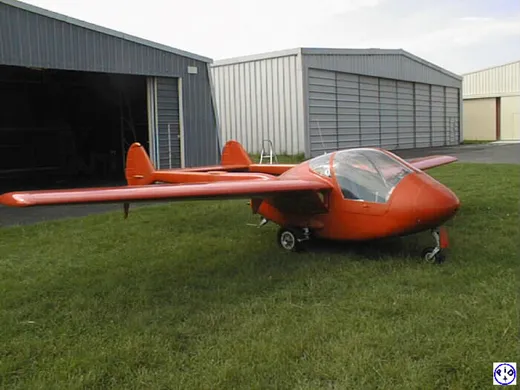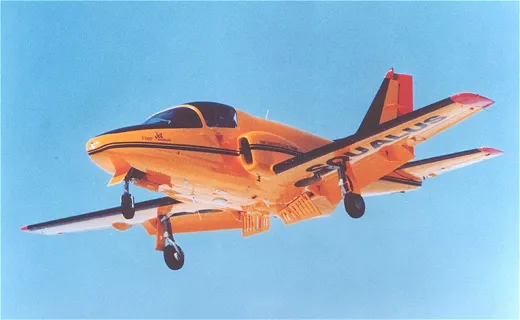The Elusive Dream
The Minijet, the Weejet, and other good ideas that went nowhere.
/https://tf-cmsv2-smithsonianmag-media.s3.amazonaws.com/filer/personal-jet-631-mar08.jpg)
The idea of a small, affordable personal jet has long been a dream of private pilots. Although a number of small jets have flown over the years, none was a commercial success, primarily due to the high fuel consumption of their primitive turbojet engines. Here's a look at some of the more intriguing attempts to bring jet power down to size.
SIPA 200 Minijet—First flown in France in 1952, the two-seat Minijet was designed around the world's first practical small turbojet engine, the 330-pound-thrust Turbomeca Palas. With a gross weight of 1,675 pounds, the Minijet was seriously underpowered on takeoff, but could still manage a top speed of 250 mph. The thirst of the little Palas engine, however, limited the airplane's range to 350 miles. Of the seven Minijets built, only two are still flying, one of them in the United States.
Dale Weejet 800—In the mid-1950s, North American Aviation engineer Harold Dale was the project engineer for the F-100 Super Sabre. In his spare time, he designed and, with four friends, built the two-seat Weejet, which first flew in March 1956. Powered by a 920-pound-thrust Continental J-69 (a license-built version of the Turbomeca Marbore, itself an uprated version of the Palas), the V-tailed Weejet could hit 330 mph and climb to 35,000 feet. Dale wanted to get the Weejet certified by the Civil Aeronautics Authority and into commercial production, and the Navy showed interest in it as a trainer. But the one Weejet prototype crashed during spin testing in April 1956 (the pilot had bailed out safely), and Dale abandoned the project.
Bede BD-5J—Perhaps no airplane has inspired more excitement among private pilots than the jet version of Jim Bede's tiny BD-5 homebuilt kit airplane. Powered by a French TRS-18 turbojet of 225 pounds thrust, the BD-5J first flew in 1973, and became an instant superstar at airshows, performing previously unheard-of maneuvers like the quadruple vertical snap roll. Bede Aircraft went bankrupt before any complete kits were delivered, but a number of determined builders have carried on, and a handful of BD-5Js are flying today. With its aerobatic prowess, miniscule size, and space-ship looks, the BD-5J remains the epitome of the private pilot's jet fantasy. Hollywood liked its look, too; James Bond (played by Roger Moore) flew one in the opening scenes of the 1983 movie Octopussy.
Promavia Jet Squalus—The third small jet designed by Italian aeronautical maestro Stelio Frati, the Squalus first flew in 1987. A roomy side-by-side two-seater, it was designed as either a military trainer or civilian sport/aerobatic aircraft. The Squalus was the first small jet to have reasonable range and endurance, thanks to its fuel-efficient 1,320-pound-thrust Garrett F109 turbofan, originally designed for the Air Force T-46 trainer. But the T-46 was cancelled in 1986, and the Squalus project died soon thereafter.
CMC Leopard—This sleek, swept-wing, four-seat British aircraft first flew in 1988, powered by two uncertified 350-pound-thrust turbojets built by Noel Penny Turbines, a small British company. When that company went out of business, the Leopard's developer, Ian Chichester-Miles, built a second prototype powered by a pair of 700-pound-thrust Williams FJX-1 engines, the man-rated version of Williams' F107 engine for cruise missiles. The Leopard flew in 1997, and appeared at the Experimental Aircraft Association's airshow in Oshkosh, Wisconsin, in 1999. Chichester-Miles envisioned a production version powered by the Williams EJ22, but that engine's demise in 2002 doomed the Leopard project. Too bad; the second Leopard prototype had eye-popping performance, with a claimed top speed of nearly 400 mph and a climb rate of more than 2,300 feet per minute.









